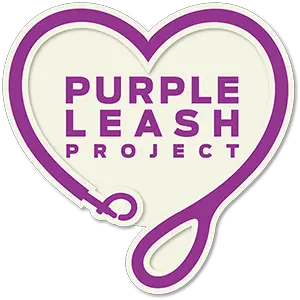I love to add fresh, healthy foods to my dog’s diet. They love to snack on fresh berries. I make pupsicles with kale. I also love to incorporate sardines whenever I can!
Sardines are a very healthy addition to your dog’s diet because they’re packed with nutrients like omega-3 fatty acids which are good for skin, coat and heart health. Before you grab any old can of sardines from the shelf at the grocery store, let’s talk about the best sardines for dogs to eat. Then I’ll share some fun ideas on how to add this healthy fish to your dog’s food.
The Health Benefits of Sardines for Dogs
We always hear about how a diet rich in fish is healthy for people. Fish also have a ton of benefits for your dog’s health!
Right off the bat, sardines are a great source of protein. Many dogs thrive on a high-protein diet because proteins are the building blocks of cells and help with growth, tissue repair and more.
Sardines are also packed with heart-healthy omega-3 fatty acids, especially EPA and DHA. Omega-3 fatty acids are known for helping with healthy skin and coat, they’re good for heart health, and cognitive function and can even help support joint health.
More vitamins and minerals that you’ll find in this oily fish include Vitamin D (which helps with calcium absorption) and Vitamin B 12 (which helps to reduce inflammation). This small fish also contains calcium, iron, and magnesium.
The last antioxidant I want to mention when it comes to sardines is coenzyme q 10, also known as CoQ10. This supports cardiovascular, gum tissue health and brain development. Sardines are one of the few natural sources of this antioxidant.
With the omega-3 fatty acids and CoQ10 I think sardines are the ideal healthy treat for senior dogs!
A lot of these essential nutrients are things that pet owners often buy supplements for. But there are a ton of research-backed benefits to feeding natural sources for things like Omega-3 fatty acids rather than process supplements. This also means that when you feed sardines to your dog, you might want to cut back on other add-in supplements that overlap.
Canned vs. Fresh vs. Dried Sardines: What’s Best for Your Dog?
When it comes to sardines, there’s a lot of ways to buy them… and eat them! When choosing what kind of fish to feed your dog you might want to consider how you plan to feed it and what kind of shelf life you need.
Of course, fresh sardines would be wonderful. But fresh fish might not be readily available where you live and it might be expensive compared to other options.

Canned sardines are what I usually use. They’re convenient, cheap and easy to find. The important thing here is to buy cans of sardines in WATER not oil. You also want to look for no salt added because too much salt can be very unhealthy for your dog.
It’s not necessary to buy special sardines for dogs. What you find at a regular grocery store is safe for your dog as long as they’re canned in water with no salt added.
I can usually find these at the grocery store. Trader Joe’s is a good place to find plain canned sardines in water. If you can’t find them in your area, you can find these Season Brand sardines in bulk on Amazon. They come out to about $2 a can which is similar to what I pay at Trader Joe’s.
One more option is to look for dried sardines! These dehydrated sardine treats are light and crunchy and would be a nice high value treat for any dog (or cat). The advantage of using a dried sardine is that you can take them on walks with you, keep them in a treat pouch or give them as easy high value treats at home.
How Many Sardines Can My Dog Eat?
With all the health benefits that sardines offer, they can be a great addition to a balanced diet for your dog. Personally, I like to add sardines as a meal topper to my dog’s regular meals. I also love using canned sardines as a Toppl filler along with other yummy ingredients. You can see one of those recipes here!
If you want to add canned sardines to your dog’s diet, here’s a rough guide to help you. This is just a guideline, please use your best judgment and treat this fish as an add-on that should not be more than 10% of your dog’s daily diet.
Dogs 0 – 9 lbs: 1/2 sardine per day
Dogs 10 – 20 lbs: 1 whole sardine per day
Dogs 21 – 50: 1 1/2 sardines per day
Dogs 51 – 80 lbs: 3 whole sardines per day (half a can)
Dogs over 81 lbs: 1 can per day
As I said above, this is a rough guideline and please always use your best judgment when feeding your dog. Whenever I add something new to my dog’s diet I give them a chance to try it in a small quantity first and gradually add more without feeding too much.
You probably don’t want to feed your dog canned sardines every day. But a few times a week you can follow the guideline above for a healthy treat.
While sardines have a much lower mercury level than that found in other larger fish, there isn’t zero mercury. Since mercury poisoning can build up in your dog’s body over time it’s important to feed sardines, and all fish, in moderation.
The Best Sardines for Dogs: My Top Picks
As you can tell, I’m a big fan of canned sardines! They’re easy to use, convenient and affordable. And again, you don’t need to buy special dog sardines when there are healthy options at the regular grocery store.
I often buy sardines in water with no salt added from Trader Joe’s. These are some of my other dog-safe Trader Joe’s buys!

If you want to shop online, two of my favorite options are:
Season Brand Sardines in Water on Amazon: This brand shares that these are wild-caught sardines, low in mercury, and a rich source of sustainable protein.
Wild Planet Wild Sardines in Water: This brand uses sustainable and selective harvesting methods to catch their sardines. Great affordable option!
**Not recommended: Chicken of the Sea Sardines because they contain salt!
Creative Ways to Feed Sardines to Your Dog
There are a lot of ways to add healthy sardines to your dog’s diet. Without overfeeding, you can add a small amount as a topper to your dog’s regular meal. A meal topper is something that is extra tasty that gets your dog excited to eat their food. Bonus points when it’s something that’s a nutrient-dense as these little fish!
When you add canned sardines to your dog’s food bowl, feel free to pour in the liquid from the can. As long as you have the no-salt-added version this liquid will give some great moisture to your dog’s food that can help them digest their food.
You can also make sardine pupsicles for your furry friend! This is a great summer treat and there are endless combos you can make. I like to keep it simple and add to a silicone ice cube mold some plain Greek yogurt and half a sardine. This might seem a little fishy, but your dog will love it!
I also love to use sardines when I’m stuffing toppls and Kongs for my labradors. After I add the base protein, a sardine is a great enticer to pop on top to get my dogs excited to dig into this treat. I always recommend freezing your food-based enrichment toys to make them last longer. When you’re using sardines I would definitely freeze the stuffed toys to cut down on mess! You don’t want sardine juice on your floors!

Feeding sardines in a variety of ways will mix up your dog’s routine and add something to enhance their life. That’s the definition of canine enrichment! I hope you’ll consider trying this healthy ingredient with your pup.
FAQs About Sardines for Dogs
Can dogs eat sardine bones? It depends, the bones in canned sardines are very small and soften during the canning process. They are safe for both people and dogs to eat. However, you should always supervise your dog whenever feeding them something new. If you see any signs of digestive upset call your vet. When feeding fresh sardines, you might need to debone them.
Are sardines good for all breeds of dogs? Yes, all dog breeds, mixes and mutts can eat sardines! Just be mindful of your dog’s size. For smaller dogs give them a smaller quantity and always supervise for signs of digestive upset or an allergic reactions. If you notice any of these symptoms after feeding your dog a new food, please contact your veterinarian.
Can puppies eat sardines? Yes, it is safe for puppies to eat sardines in small portions.
What is the best way to store leftover sardines? Since canned sardines have a very strong smell I like to keep what’s left over in the can they came in and place the whole can in an airtight container in the refrigerator for up to 3 days.
Find More Creative Ideas For Healthy Foods To Feed Your Dog
We’ve explored the benefits and versatility of sardines, a wonderfully healthy addition to your dog’s diet. These tiny fish are packed with nutrients that support heart health, a shiny coat, and overall well-being.
Always introduce new foods like sardines gradually and keep an eye out for any reactions. Remember, the guidelines I shared above are a starting point, and each dog’s needs may vary. Always consult your vet if you’re unsure about what’s healthy for your individual dog.
Ready to try this as a meal topper or get creative with treats like sardine pupsicles? I can’t wait to hear about it all in the comments below!
For more ideas to enrich your dog’s life, join my FB group or check out the posts below:
Superfood Pupsicle Treat Recipe
Kong Stuffing Recipes My Labradors Love
Doggy Acai Bowl Recipe
Dog Mom Hacks to Save Money on Premium Dog Food








0 Comments